Survival Cache is a gear site for survivalists, preppers, and those who just want to be prepared for the unknown. In my time writing for this site I have reviewed knives, knife sharpeners, fire starters, flashlights, and on the list goes.
In today’s article I will be reviewing an IR Thermometer by Klein Tools, which at first glance may seem a bit odd to you. However, through my experience with IR thermometers, I have found they are not just for the worksite and can be a very useful item to have at home.
In this review I will discuss:
- What IR thermometers can and cannot be used for
- How they work
- My thoughts on this particular product
- And how a prepper can use one
Let’s get the ball rolling by seeing what this digital infrared thermometer by Klein Tools has to offer.
Specifications and Features
The following specifications and features were taken directly from the manufacturer’s website:
- Infrared Thermometer has an optical resolution (distance-to-spot) of 10:1
- Features include targeting laser; automatic hold; backlit display; low battery, auto power-off
- Drop protection to 6.6-Foot (2 m)
- Measurement range is -4 to 752-Degree Fahrenheit (-20 to 400-Degree Celsius)
- Not a medical device; thermometer is NOT intended for use on people or animals
- Fixed emissivity at 0.95
- Includes custom pouch and a 9V battery
- ”Auto Power-Off” conserves and extends battery life
- Certified to IEC EN 61326-1.2006, EN608251.1994+A2.2001+A1.2002
Dimensions and Weight
The IR thermometer is 6.01″ (15.3 cm) long, 1.24″ (3.1 cm) wide, and 4.14″ (10.5 cm) high. The thermometer weighs in at 7.1 oz (201 g)
Country of Origin
Klein Tools is an American Company, but I could not find anything on the packaging or the product that stated where the product was made.
Hands On Review
I have used a few different IR thermometers in my life, so they seem like a normal tool to me. But without fail, whenever I use one someone gives me an odd look and says, “What are you doing?” I answer that I am taking a temperature. This is then followed up with “How does that work?”
So, since not everyone may be familiar with an IR thermometer, I think a good place to start with this review is how one works, and what you can and cannot use it for.
How a Infrared Thermometer Works
I tried to explain this process a few different times, but my words kept coming up short. Below is a better description than what I could come up with. The description is from an article on How Do Infrared Thermometers Work? (sciencing.com)
“Infrared thermometers work based on a phenomenon called black body radiation. Anything at a temperature above absolute zero has molecules inside of it moving around. The higher the temperature, the faster the molecules move. As they move, the molecules emit infrared radiation–a type of electromagnetic radiation below the visible spectrum of light. As they get hotter, they emit more infrared, and even start to emit visible light. That is why heated metal can glow red or even white. Infrared thermometers detect and measure this radiation.”
What to Use an Infrared Thermometer For
It’s important to understand that this infrared thermometer is for taking the surface temperature of an object. While this can be indictive of temperatures below a surface, that is not what it is designed for. Once you understand that, you can take the temperature from all sorts of things.
I’ll get into this a bit more later on as it relates to uses for preppers.
What Not to Use an Infrared Thermometer For
This IR thermometer is not a medical device and therefore should not be used on humans or people. Sorry, but if you or your pooch are running a temperature, then you need to find a different tool. And since it is meant for surface readings, it should not be used to judge the internal temperature of food.
Below are a few more warnings about the product that I pulled directly from the manufacturer’s website.
- LASER RADIATION, Class II laser. Do NOT stare into beam. Exposing eyes to laser radiation can result in severe and permanent eye injuries.
- NEVER look directly into the laser beam emitted by this instrument.
- Usage of this tester in any way other than that specified by the manufacturer can impair safe operation, resulting in severe injury or death.
- Thermometer is NOT intended for use on people or animals.
Additionally, the thermometer should be kept away from strong electromagnetic fields.
Battery Life Expectancy
This thermometer uses a 9V that comes with it, and, according to the instructions, it should last for five hours of continuous use. This may not seem like a long time, but for the most part, when I use this thermometer I’m not using it for long periods.
It’s on for a few seconds at a time while I am taking a reading, and then I’m done. It’s always a good idea to have an extra batteries available, but unless you plan on using the thermometer a ton, the five hour battery life expectancy is more than I need.
Installing the Battery
I’m not a huge fan of devices that run on 9V batteries, but sometimes, I guess it can’t be avoided. After reading the instructions (which I recommend you do with every product before using) I went ahead and installed the 9V that was included. It’s a simple process, and you will need a Phillips screwdriver.
There is a single screw on the back part of the handle. Loosen this screw all the way by turning it counterclockwise and the battery compartment door can be pulled open.
Take the 9V and install it by snapping the battery terminals into the connectors. Turn the 9V sideways and press it down into the compartment. Press and hold the trigger until the backlit display turns on. If it doesn’t turn on in a few seconds, then check to make sure the battery is properly connected.
When the screen turns on, close the door and tighten the screw by turning it clockwise. I’m now ready to start taking some temperatures!
How It Works
I’ve already gone over what the thermometer can be used for, but how do you actually use it? Don’t worry because this model is incredibly simple.
To turn it on, simply press the trigger, and the screen will light up.
Next, point the thermometer at the surface you want to take a reading from and hold the trigger down for about two seconds. When the trigger is held down, a laser beam will show you exactly where the sensor is pointing to. This gives you more precision. Some models have duel targeting lasers, but this model only has one. Dual lasers assist in showing the targeted area.
After two seconds, release the trigger and the temperature will show up on the display. This is how the display will look when taking a measurement.
Above the temperature is a small triangle, this indicates that the laser is on. And in the top right corner is the battery level indicator. To get the most out of this device, pay attention to the low battery indicator. When the low battery indicator appears, install a fresh 9V.
This is how the display will look when you release the trigger.
When the trigger is released it will say “HOLD,” which means it is holding the last reading you took so that you can see it and record it, if need be. After releasing the trigger, the thermometer will shut off after about nine seconds.
Distance to Spot Ratio
This aspect of an IR thermometer might seem a little confusing at first, but it’s pretty straightforward. The model that I have, has a distance to spot ratio of 10:1. What this means is that when the device is ten inches away from the targeted area, the spot that is being read is a one inch circle, and at twenty inches away, it’s a two inch circle.
This means the smaller the area is that you want to know the temperature of, the closer you should be to it for more accurate readings.
Switching Between Fahrenheit and Celsius
When I got this product, it was automatically set to Fahrenheit, which is what I normally use. However, it can bet set to give you the readings in Celsius, if that is what you prefer. To switch between Fahrenheit and Celsius, get into the battery compartment as described earlier in the article. At the top of the compartment you will see a little switch labeled F or C. Push the switch to the side that you want.
Measurement Range
This product has a pretty wide measurement range. It goes from -4 to 752 degrees Fahrenheit. This gives you different temperature measurement applications because you can use it for very hot surfaces and very cold surfaces.
For me, I’m not dealing with temperatures beyond those ranges at home and I don’t think most people are either. So, for my everyday use, this range is perfect.
Drop Test
According to Klein Tools, this product is drop tested and approved for 6.6 ft. So, even though I like this device, I had to try it out. Here is a short video of me dropping it from 6.6 ft.
I might have cringed a bit when dropping it, but the laser thermometer survived the test and other drops and kept on working.
Carrying Pouch
The IR1 does come with a handy dandy carrying pouch. I believe its made from nylon, and the quality of it isn’t that great. Mine came a bit tattered up. But it does provide a place to store the device when not in use, and thanks to the belt loop, you can attach it to your hip so that your spouse gives you weird looks when wearing it around the house.
Uses For Preppers
Okay, so at the beginning of this article I said that this was kind of an odd product for me to be reviewing for a prepping website, but it kind of isn’t. I think it is an incredibly handy and useful tool to have as it relates to prepping.
Want some examples?
Refrigerator and Freezer
Years ago, the town I lived in lost power due to a bad storm. I don’t remember the exact timeframe that I was without power, but it was teetering on the range of “should I throw my refrigerated food out or not?”
Some people draw a hard line and say, “Just throw it all out after X amount of time!” but groceries are expensive. And the food you have may represent a lot of work and money if it was obtained from hunting, fishing, or gardening.
Other people say every product should be checked individually for this or that and results should be based on that. Well, I didn’t think a food item smelled too bad or felt too warm once, and I got sick from consuming it.
I was thinking I would probably just toss the food from my refrigerator, but then I remembered I had an IR thermometer. As I said earlier, this isn’t a food thermometer and shouldn’t be used for internal temperatures.
Instead, as soon as the power came back on, I used the device to take readings of the inside of the fridge and surface of the food. To my surprise, the refrigerator did a great job of keeping things cooler than I expected, and I ended up keeping everything. I was even able to check the temperature of my freezer accurately.
Food and Gear Storage
In most prepper articles about food storage, we tell you to store the food in cool, dry areas out of direct sunlight. But without a thermometer, it’s very tricky to judge if an area, say, the inside of a closet, is too warm to store food in. With an IR device, you can get a reading in two seconds. The same principle applies to certain gear.
Temperature Regulation
Maintaining core body temperature, as well as the supplies in our homes, is important. Summer is upon us, and currently I am using window air conditioners to cool my home. In one small area, it was getting hotter than it should have been. Even though the air coming out of the nearest unit felt cool, my first thought was that the air conditioner was dying.
This opens up an array of different expenses. Does it need some new part, should I have someone take a look at it, or should I just buy a new one? All of these options can put a dent in your prepping budget.
Luckily, I had this IR thermometer which allowed me to take a very quick reading from the A/C unit. Here’s a picture of that (the measurement area is on the vent, which I was able to get, even without dual laser targeting).
As you can see, the air temp coming out of it is just fine. Since I knew the A/C was fine, I started investigating other issues and have since fixed those.
But it’s not just for cold air. Recently, I posted an article on how to make a clay pot heater using tea candles as the heat source. From experience, I know tea candles can warm up small spaces, but I wanted to take some readings that had precision. That way I would know for sure if that type of heater worked and was worth the time and money to make. The thermometer worked great, as did the clay pot heater, so I was confident in recommending that project to you guys.
Troubleshooting
Just like the above example I gave about my A/C unit, there are all sorts of devices, machines, etc. that knowing the temperature of parts of it can help you to troubleshoot or avoid problems.
Is Your Soap Hot Enough?
My wife loves to make homemade soap, as do a lot of people wanting to be more self-sufficient or who are looking for less toxic products. At some point in the process the soap has to be a certain temperature, and she uses an IR thermometer for that purpose.
Pros and Cons of an Klein Tools IR Thermometer
Pros
- Affordable
- Comes with a custom pouch
- Drop test approved
- Accurate reading plus or minus a few degrees
- Great for use at work or at home
- Lightweight and compact
- Easy to use
- Targeting laser for more precision
- Wide measurement range
- Quality built
Cons
Thus far, the only negative thing I can say about this product is that it uses a 9 volt battery. There is nothing inherently wrong with that and it doesn’t negatively effect the operation of the product, it’s just a personal preference on my part.
Also, I would have like to seen a carrying pouch with a little higher quality, but given the affordable price range of this tool, I can overlook that.
FAQs
Can an IR thermometer be used for air temperature?
No. It’s not designed for taking ambient temperatures. For example, I can’t use it to determine the temperature of the room I’m in but I can use it to find out the temperature of the walls, celling and floor.
Is the IR thermometer waterproof?
I couldn’t find on the manufacturer’s website whether this product is waterproof or not. However, it does say to keep these IR thermometers out of excessively humid areas, so I would say that it is not waterproof.
Final Thought
After researching several IR thermometers, prices, and reviews, I feel like this one offered by Klein Tools is the best value and you can pick it up for around $32. I have used Klein Tools before, and know many others that use them, and we have always been satisfied with their product quality.
I know that this is not a tool or instrument that a prepper needs to have. But I have to say, there are a lot of things I want to know the temp of, and this product makes it a whole lot easier while providing accuracy.
If you are looking for an IR thermometer with a laser that isn’t complicated, quality built, that will deliver good results with different temperature measurement applications, and won’t break your bank account, I highly recommend this infrared thermometer by Klein Tools.
Thanks for reading and stay prepared!



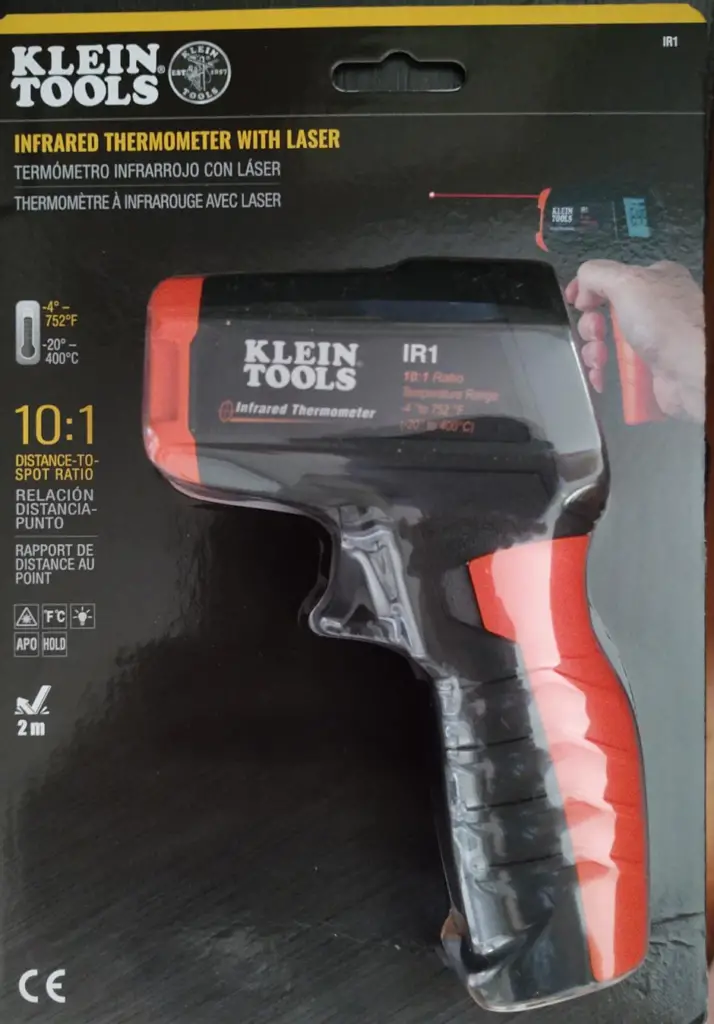
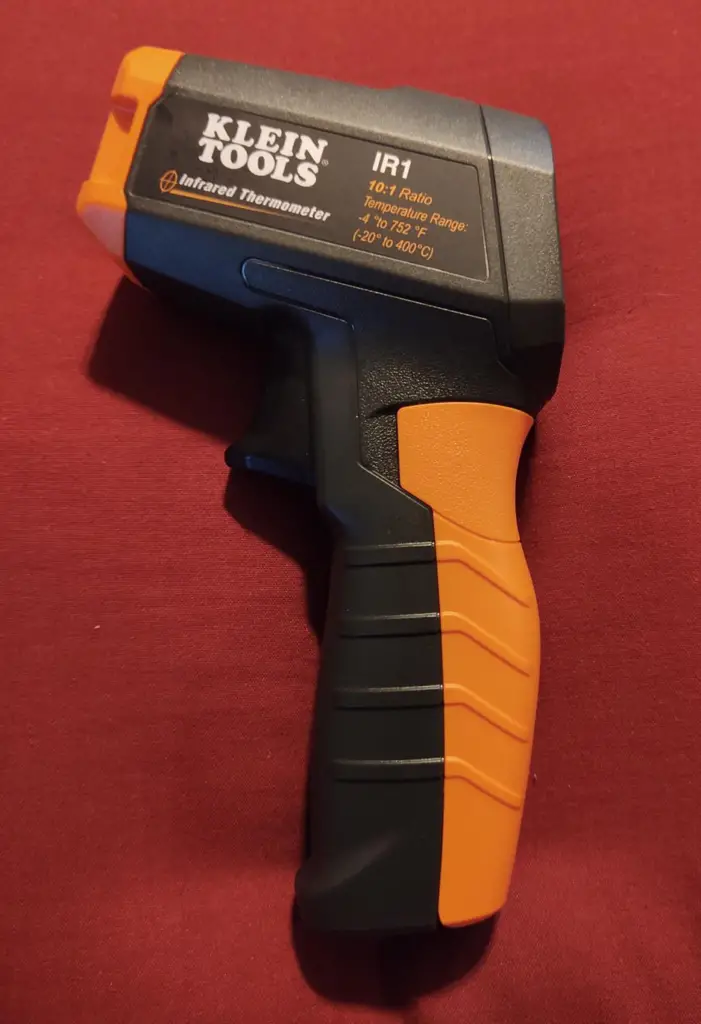

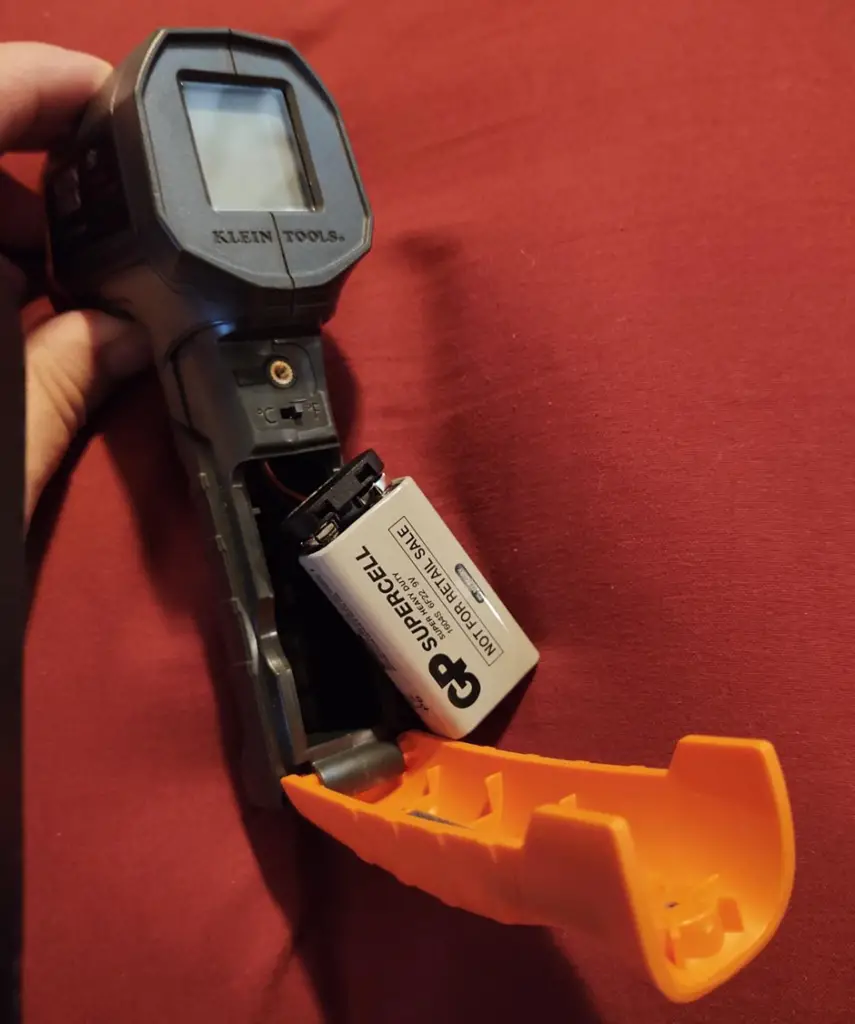
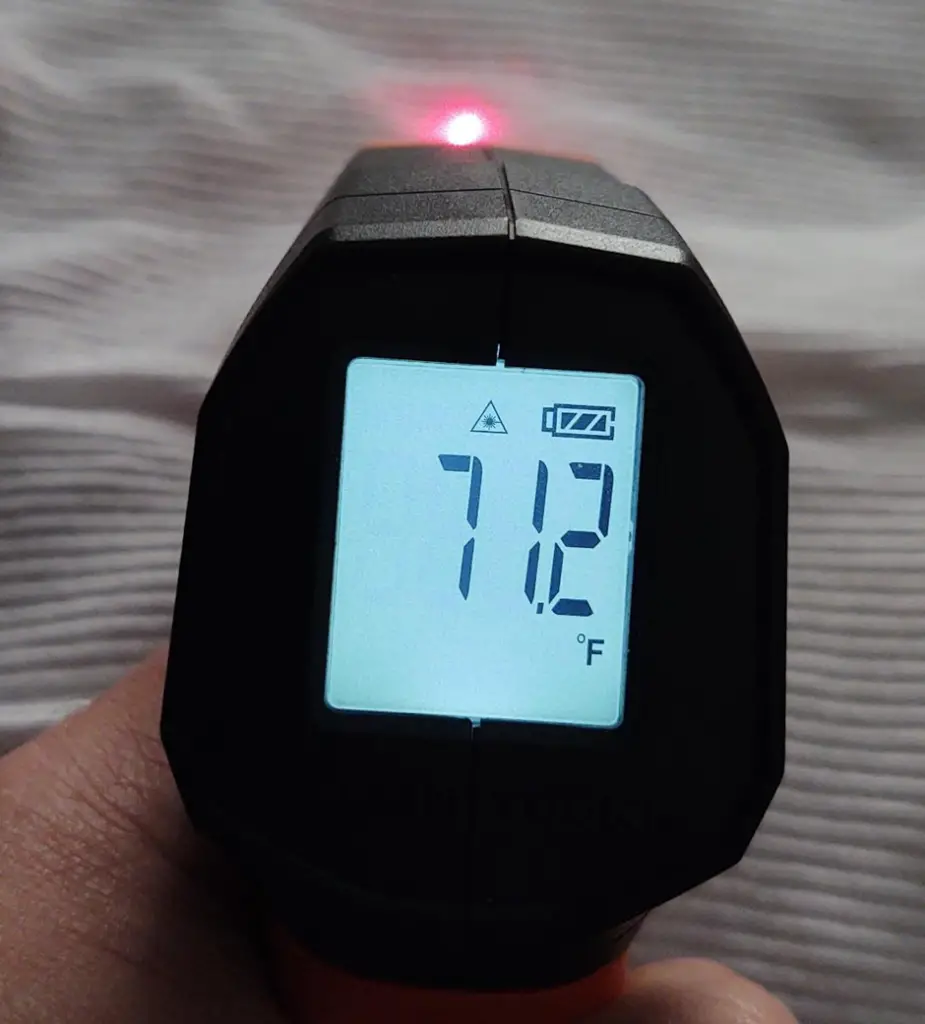
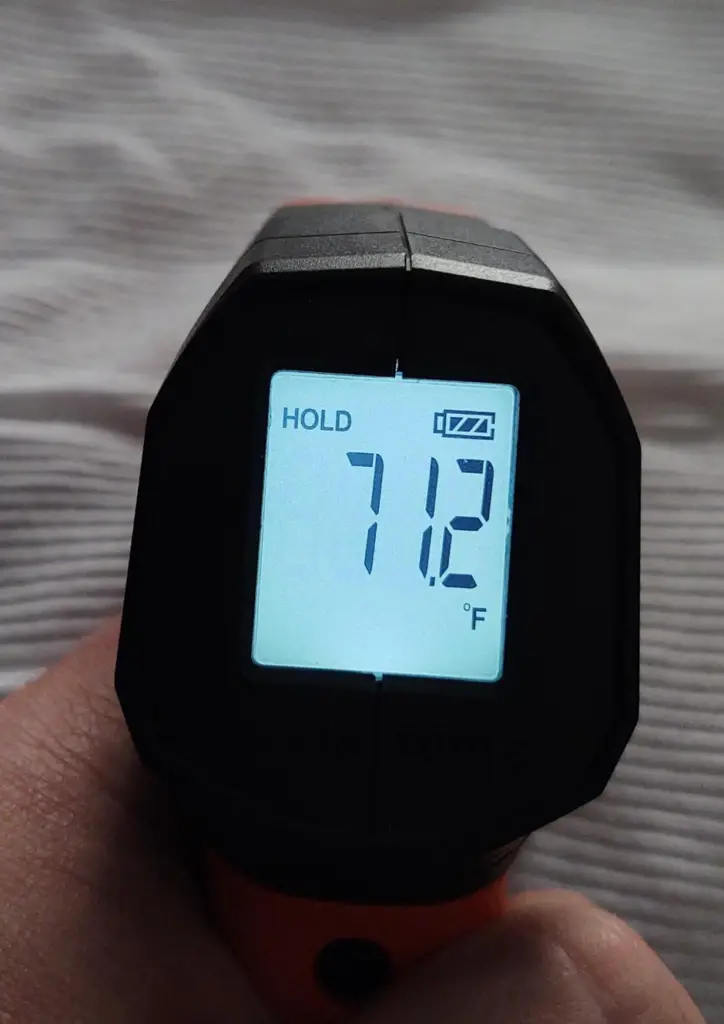
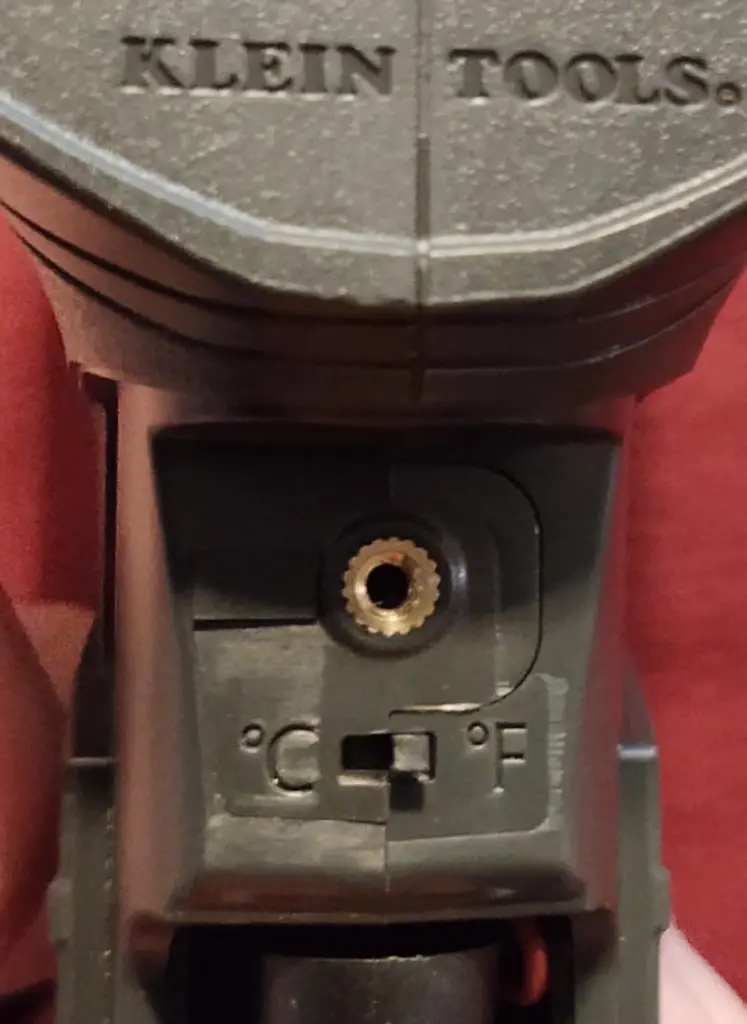
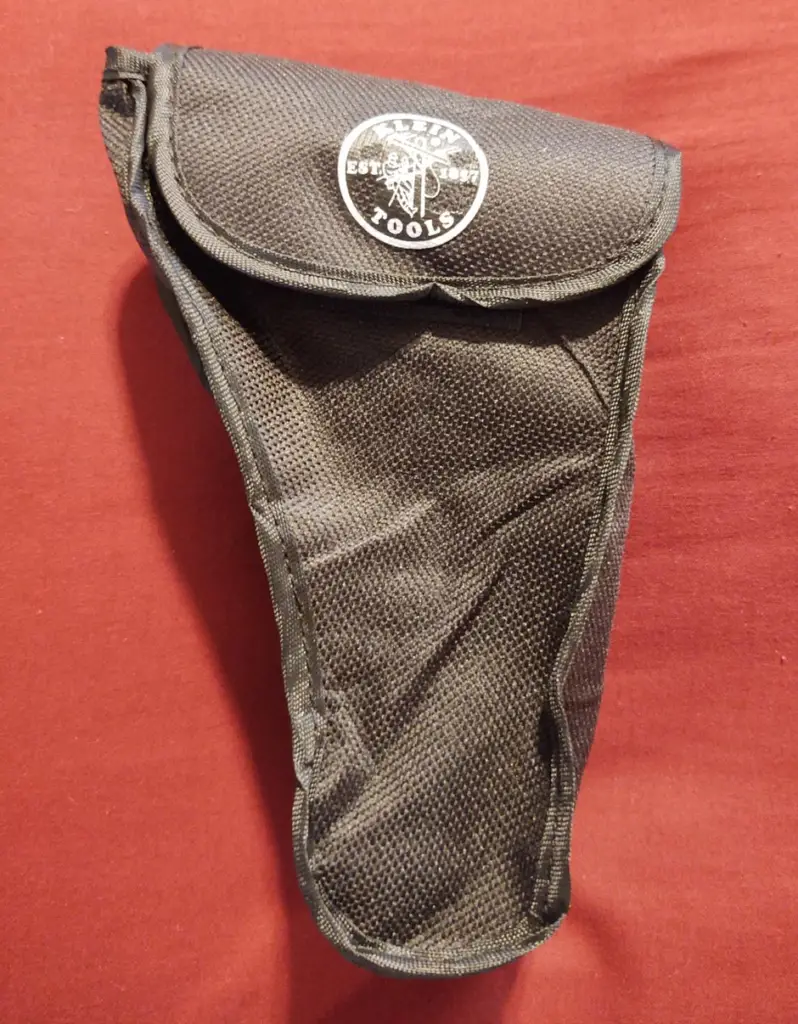
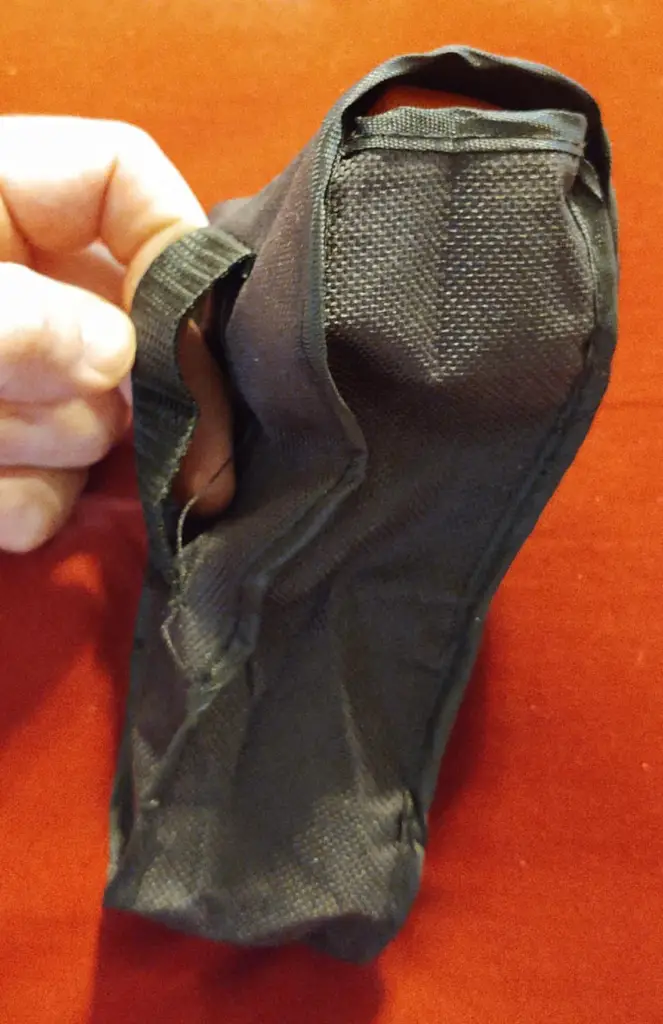
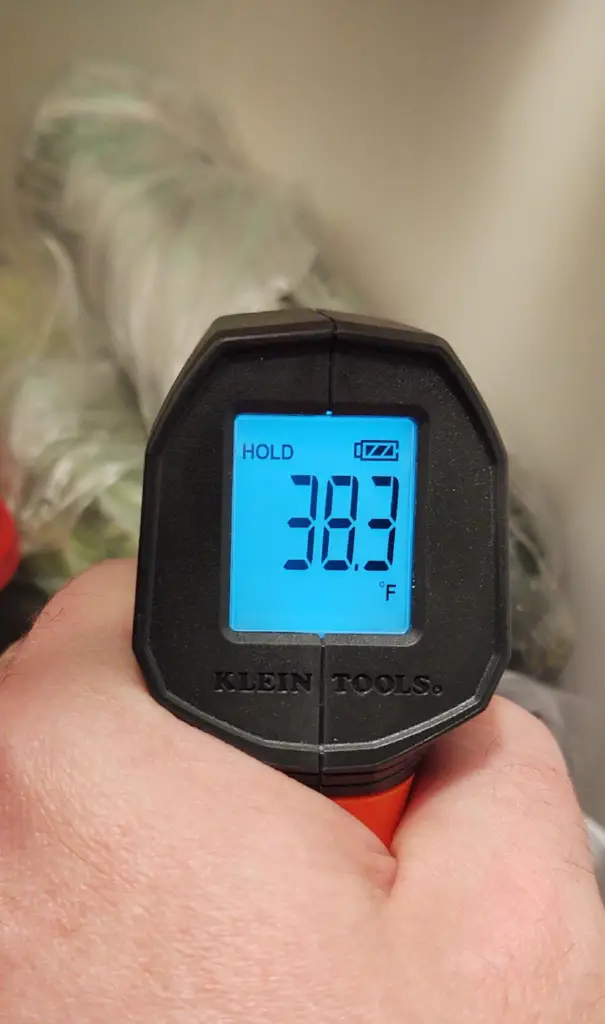



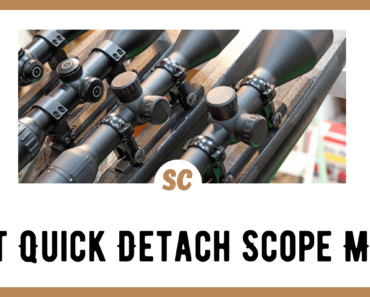
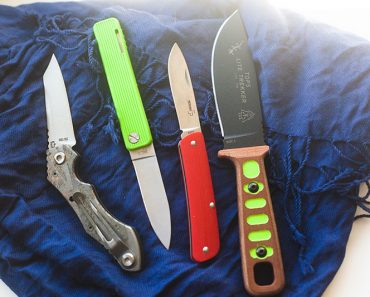


![Kevin Estela and the Flip Flop BBQ Guy | Grilling Technique [PODCAST] Kevin Estela and the Flip Flop BBQ Guy | Grilling Technique [PODCAST]](https://survivalcove.com/wp-content/uploads/2021/10/Packing-Goats-Hunting-Survival-370x297.jpg)



















